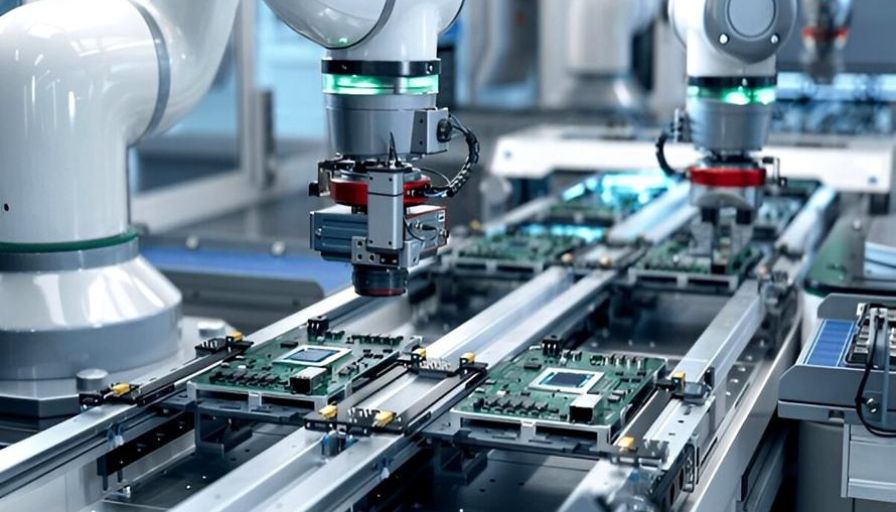The Backplane PCB plays a vital role in modern electronic systems, acting as the central backbone that connects multiple circuit boards into a single, cohesive unit. These PCBs are engineered to handle high-speed data transfer, power distribution, and mechanical support for complex assemblies used in telecommunications, industrial automation, aerospace, and computing systems.
Unlike standard printed circuit boards that perform specific functions, a Backplane PCB serves as the main interconnect hub — enabling different modules or daughterboards to communicate seamlessly. As technology continues to evolve, backplane boards have become increasingly sophisticated, supporting higher frequencies, greater signal integrity, and enhanced durability.
What Is a Backplane PCB?
A Backplane PCB is a large circuit board designed to interconnect multiple smaller boards (also called daughtercards or plug-in cards) through high-speed connectors. It provides electrical pathways and mechanical support, allowing signals and power to flow between modules efficiently.
In essence, the backplane acts as the communication highway within electronic systems, reducing wiring complexity and improving performance. Because of its structure and reliability, it is widely used in data centers, communication equipment, and control systems where consistent signal transmission is critical.
How Does a Backplane PCB Work?
The Backplane PCB operates as a centralized framework that organizes how data and power are routed across a system. Each plug-in card connects to the backplane via edge connectors, enabling modular design and easy upgrades or maintenance.
When signals pass through the backplane, they must travel across precisely engineered copper traces with controlled impedance to minimize signal loss and electromagnetic interference (EMI). The accuracy of trace routing, layer stacking, and connector alignment are crucial for ensuring high-speed communication and system stability.
Key Features of a Backplane PCB
- Multi-Layer Design
Most Backplane PCBs are multi-layered, often ranging from 8 to 30 layers or more. This allows for complex routing, enhanced signal integrity, and effective separation between power and ground planes.
- High-Speed Signal Capability
Backplane PCBs are built to support data rates in the range of several gigabits per second. Their design ensures low crosstalk and minimal signal degradation, even in demanding environments.
- Mechanical Strength
These PCBs are usually thicker and sturdier than standard boards to handle the stress of multiple connectors and daughtercards. Reinforced materials and thicker copper layers improve mechanical stability.
- Custom Connectors and Interfaces
The connectors used in Backplane PCBs are specially designed for high-density, high-reliability applications. These include press-fit connectors, card-edge connectors, and differential pair routing systems.
- Thermal Management
As high-speed signals generate heat, efficient thermal management is essential. Backplane boards often include copper planes, heat sinks, and advanced materials to maintain temperature stability.
Applications of Backplane PCBs
The Backplane PCB is integral to a wide range of industries that depend on reliable, high-performance interconnections. Some key applications include:
- Telecommunications
Backplane boards are commonly used in base stations, network routers, and data communication switches. They handle large volumes of data traffic and ensure uninterrupted signal transfer.
- Data Centers and Servers
In data centers, Backplane PCBs are used to interconnect server blades and storage modules, supporting high-speed networking and efficient data management.
- Industrial Control Systems
Automation and process control systems rely on backplanes to connect input/output (I/O) modules, controllers, and communication cards. Their durability ensures continuous operation in harsh industrial conditions.
- Aerospace and Defense
Due to their reliability, backplane boards are used in radar systems, avionics, and mission-critical defense applications, where signal accuracy and mechanical robustness are non-negotiable.
- Medical Equipment
Medical imaging systems, monitoring devices, and diagnostic equipment use Backplane PCBs for stable performance and easy modular maintenance.
Benefits of Using Backplane PCBs
- Simplified System Architecture
Backplanes eliminate complex wiring harnesses, reducing assembly time and simplifying design. This modular setup allows for easier maintenance and scalability.
- High Reliability and Durability
Their robust design and stable connections make Backplane PCBs ideal for environments requiring long-term operational reliability.
- Superior Signal Integrity
The controlled impedance design minimizes noise and crosstalk, ensuring data accuracy even at high frequencies.
- Scalability and Flexibility
Systems using backplanes can be easily expanded or upgraded by adding or replacing plug-in cards without redesigning the entire system.
- Space and Cost Efficiency
By consolidating interconnections on one board, backplanes save space and reduce the overall cost of cabling and maintenance.
Design Considerations for Backplane PCBs
Designing a Backplane PCB involves careful attention to electrical, mechanical, and thermal parameters. Engineers must focus on:
- Layer Stack-up: Ensuring optimal signal routing and ground plane distribution.
- Impedance Control: Maintaining consistent signal performance.
- Connector Selection: Matching the right connectors with system requirements.
- Material Choice: Using high-performance substrates such as FR-4, Rogers, or polyimide for better signal transmission.
- Thermal Design: Managing heat dissipation for stable operation.
Simulation tools and signal integrity analysis are often used to validate designs before manufacturing, reducing the risk of costly revisions.
The Future of Backplane PCBs
With the rapid growth of data processing and communication technologies, Backplane PCBs are evolving to support even faster data rates, greater density, and enhanced power efficiency. Emerging trends include:
- Optical Backplanes using fiber optics for ultra-high-speed data transfer.
- Hybrid Backplanes combining electrical and optical connections.
- Advanced Materials that support 5G and next-generation computing applications.
As these technologies mature, backplanes will continue to serve as the foundation for interconnected, high-performance electronic systems.
Conclusion: Partner with a Reliable Backplane PCB Manufacturer
The Backplane PCB remains indispensable in industries where reliability, speed, and scalability are essential. From communication systems to aerospace applications, these boards form the structural and electrical backbone of advanced electronics.
Choosing the right Backplane PCB Manufacturer ensures superior performance, quality control, and long-term reliability. A trusted manufacturing partner with advanced design capabilities, state-of-the-art production equipment, and rigorous testing standards can deliver customized solutions tailored to your system’s unique requirements.
Collaborate with a professional Backplane PCB Manufacturer to ensure your complex systems operate efficiently, reliably, and ready for the technologies of tomorrow.
